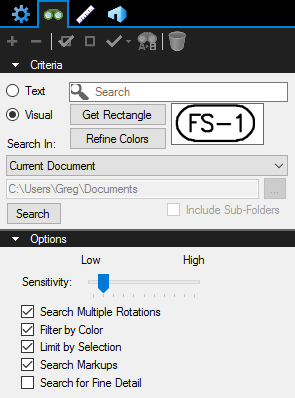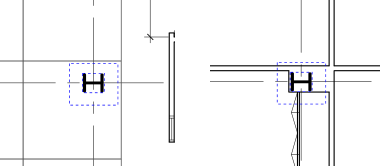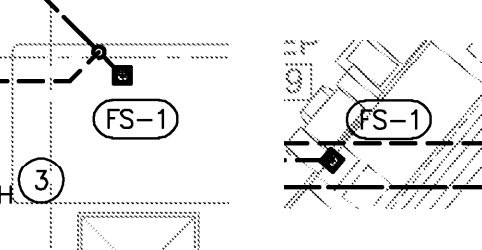Applies to:
- Revu 21
- Revu 20
- Revu 2019
- Revu 2018
Jump to other versions:
Find symbols or images with VisualSearch
With the VisualSearch feature, you can search for all instances of a visual cue or object that occurs in a document. Once you’ve found all the instances of an object, you can apply an action—such as highlighting or hyperlinking—to all of those instances at once. If you’re working with hard copies of drawings, you can scan them to PDF and apply VisualSearch.
To use VisualSearch:
- Open the
Search panel (Ctrl+F or Alt+1).
If you don’t see the Search panel in the sidebar, go to Window > Panels > Search. - Click the
Visual Search button.
- Click Get Rectangle.
- Draw a rectangle around the object you want to search for. To draw a square, hold Shift while dragging.
A preview will display on the left. If it doesn’t appear, try widening the Search panel. - Click Search. The search progress will display at the bottom of the panel.
-
If you have too many irrelevant results, or too few relevant ones, go to the Options section and adjust the Sensitivity slider for better results. Lower sensitivity allows for more variation in results, while higher sensitivity creates a stricter search.
-
Once you have your results, you can select some or all of them and then right-click to hyperlink, add bookmarks or highlights, and more.
Defining the search rectangle
VisualSearch considers everything included in the search rectangle, including empty space. Creating rectangles that are too large can keep relevant items from being included in the search results. It’s best to create a rectangle that’s as close to your object as possible.
How-To
Revu 2019
Markup
Editing Documents
Revu 20
Revu 21
Other versions of this article
Revu 2017 and older
Drawings contain a large number of symbols, and sometimes you need to hyperlink those symbols to specifications or details. Revu’s VisualSearch feature lets you search for all instances a visual cue or symbol occurs in a drawing set and then apply an action, such as highlighting or hyperlinking, to all of those instances at once. If you are working with hard copies of drawings, you can scan them to PDF and VisualSearch will still work.
VisualSearch can be found in the Search ![]() tab, which is the same place you search for text. You can access the Search
tab, which is the same place you search for text. You can access the Search ![]() tab a few different ways:
tab a few different ways:
- Press Ctrl+F or Alt+1.
– or –
- Click Tab Access
 > Search
> Search  .
.
– or –
- Click View > Tabs
 > Search
> Search  .
.
Using VisualSearch
- Open the Search
 tab.
tab. - Click the Get Rectangle button. (Visual will automatically be selected after you click the button).
- Draw a rectangle around what you want to search for. The search preview will display on the right of the Get Rectangle button. (Widen the Search tab if you don’t see the preview.)
- Adjust the Sensitivity slider in the Options section of the Search
 tab.
tab. - Click the Search button to start the search.
- The search progress will display across the bottom of the Search
 tab.
tab. - The results will display in the lower half of the tab. You can select all the results to apply an action such as add bookmark, add hyperlink, add highlight and more.
The image below shows the Search ![]() tab displaying the preview after the search rectangle has been defined.
tab displaying the preview after the search rectangle has been defined.

Defining the Search Rectangle
VisualSearch considers everything that is included in the search rectangle – including empty white space. Therefore, it’s best to create as small a rectangle around the search area as possible. Creating large rectangles will result in items not being included in the results. For example, when searching for a post or vertical I-beam on a floor plan, the beam may be alone, next to, or even inside a wall.
The image below shows two different search rectangles around different posts on the same floor. The post on the right would not be found because the search rectangle includes too many additional wall lines. However, the smaller search rectangle would find both posts.

Sensitivity
Drawings can contain a lot of variation and background noise. Changing the Sensitivity lets you define how literal the search will be. For example, center lines running through posts may not be exactly the same, or the symbol that you are searching for may be placed over some other lines. Lowering the sensitivity allows some variation.
The image below shows a symbol in two places in a drawing. On the right there are lines running under the symbol. Search can find both only if the sensitivity setting is lowered. You may have to search a few times with different sensitivity settings to find out what yields the best results.

Details about additional options in the Search Tab and Searching PDFs is available in the Revu Help.
How-To
Revu 2017 & Below
Markup
Editing Documents
